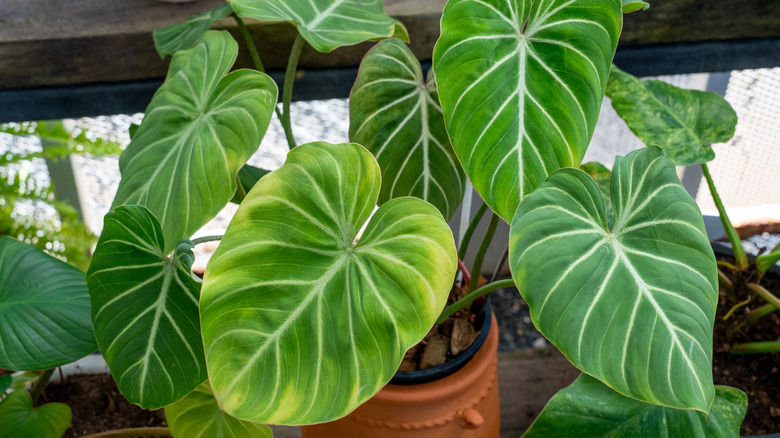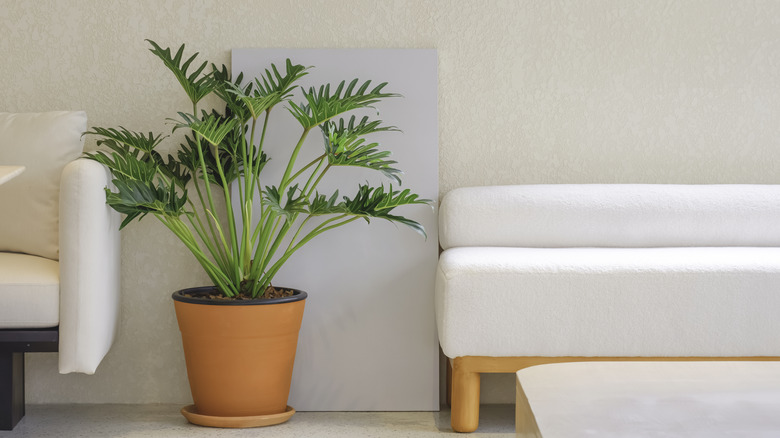Trade Your Crawling Philodendron For A More Upstanding Option
For novice and expert houseplant owners alike, Philodendrons have long been a popular, easy-to-grow, and accessible choice. This genus boasts more than 450 species, which offer an abundance of textures, patterns, and hues. Some of the common Philodendrons include the Philodendron 'Summer Glory', Philodendron 'Gloriosum' (pictured above), and Philodendron 'Plowmanii', which are considered crawling plants. This means that in their natural habitat, they put out roots as they creep along the surface of the soil. While the trailing habit gives them a wildly lush appearance, crawling plants end up needing more horizontal space — like long rectangular pots — to sprawl. Unfortunately, this can be challenging in small homes that lack space for such a wide planter.
In contrast to crawling Philodendrons are the climbing or vining varieties. In the wild, they start off at the base of a tree and use their aerial roots to cling to the trunks, winding upward in search of more light. Grown on a support system like a moss or coco coir pole — you can DIY a Dollar Tree moss pole yourself — vining plants will thrive as houseplants, but will need maintenance to stay tidy. If you're looking for something more low-maintenance that is not quite a crawler or a climber, check out the Philodendron 'Xanadu' — with its ruffled leaves and compact size it will brighten up any space.
Caring for the Philodendron 'Xanadu'
At first glance, the 'Xanadu' doesn't look like your typical philodendron. It's more bush-like, with glossy scooped foliage (think pasta tongs) stemming densely from one point. The 'Xanadu' maxes out at a height between 3 and 5 feet, growing at a moderate rate that doesn't overwhelm its owners with frequent repotting or pruning demands. Its growth habit also means you don't need to continually train any vines up a pole. Another benefit of the 'Xanadu' is that it has air-purifying qualities; on the other hand, it's poisonous to humans, cats, and dogs if ingested.
To keep your 'Xanadu' happy, try to recreate the warmth and humidity of the rainforest, the plant's natural habitat. Give it bright, indirect light — like sunlight streaming through a canopy of trees overhead — and keep it away from drafty windows or vents. As with most tropical plants, think about how you can raise the humidity in your home to help this plant thrive. Make sure the 'Xanadu' has well-draining soil, preferably with organic matter like peat moss, coco coir, pumice, or perlite to foster aeration and offer nutrients.

